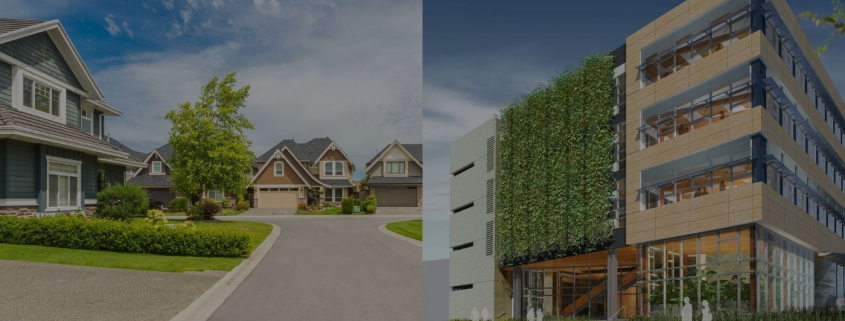Differences Between Residential and Commercial Projects
Human settlements comprise different sorts of building structures. Among them are residential and commercial structures that constitute our lives the most. These differ from each other in many aspects including their scope. In other words, these come with their distinct features.
First, let us have a look at their different aspects before understanding the differences between residential and commercial projects
Commercial Projects
Buildings made for the intention of commercial intention are commercial projects. These are often made on commercial locations such as main avenues, highways, roads, and other locations. These buildings are made to stand out and attract businesses. Building them can be eased with commercial estimating.
Residential Projects
These are buildings made mainly for residential purposes. But these are used as a business in case of a rental property. These include the facilities required to rest and relax. Further, they are constructed on backstreets, lanes, and alleys where normal traffic does not pass and noise is exempted.
Both of these can be distinguished from each other through the common differences between residential and commercial projects. These are
| Commercial Projects | Residential Projects |
| These are made primarily for commercial gains. All other purposes are secondary | These are primarily constructed for residing. While certain residential buildings are constructed as rental properties for commercial gain |
| These often come with multiple windows, glass façades, and appealing exteriors | However, these come with covered & simpler façades and lesser windows |
| They are located on main streets, avenues, and highways. In other words, close to mainstream traffic | They are located on backstreets, lanes, and alleys. Locations where traffic is limited and at bay |
| These include a diversity of projects such as offices, hospitals, educational facilities, shopping malls, mixed-use buildings, and various others | These include projects such as townhouses, condominium, single-family units, multiple-family units, and others |
| These constitute storages, warehouses, offices, laborites, meeting rooms, lobbies, restrooms, and others | These constitute bedrooms, kitchens, lounges, hallway, living room, and others |
| These normally have multiple numbers of stories reaching tens and even hundred | These are much less in their number of stories. Single-family houses often have one or two stories |
| More finances are spent on the exteriors as they are meant to attract outsiders | In residential projects, more is spent on interiors to make it more relaxing and comforting |
| These carry more sale and resale value in the real estate market and hence making them expensive. Both location and the intention of the project add to the value | These carry less sale and resale value in the real estate market and are less expensive than commercial projects. These are due to the reason of building and location |
| Their tenants are business owners and entrepreneurs. They are dealt with as per their business | Their tenants are families and individuals. Although they may be running some business their attribute is used as families or individuals |
| Construction materials and devices are used for commercial usage. These are a bit more expensive than their residential counterparts. But they hold more capacity to function and provide the required effect | Every construction material and device is used as of residential grade. These are cheaper than commercial-grade devices and provide somewhat less competence. Residential Estimating Services can be used to gain information about them |
| Commodities such as water and electricity are available at high rates. | Water, electricity, and others are available at residential rates that are lesser than commercial rates |
Conclusion
Residential and commercial are major classifications of building structures we utilize to live and carry out our tasks. These come with specific aspects that provide their primary and secondary uses for life. The prominent/common differences between residential and commercial projects are discussed in the article to provide a somewhat understanding of the two and their comparison.




